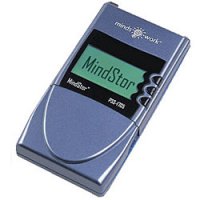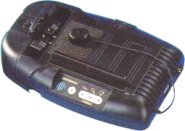Technical Details We used a
Minolta Dimage V which is a 3.2 megapixel camera -
it was at the magic point (where the "capabilities" curve crosses
the "price" curve) a year ago when we bought it ... on-line, at about 50%
of the price in local camera stores.
We used a
Minolta Dimage V which is a 3.2 megapixel camera -
it was at the magic point (where the "capabilities" curve crosses
the "price" curve) a year ago when we bought it ... on-line, at about 50%
of the price in local camera stores.
We took 2 CompactFlash memory chips to Africa, each 256 megs capacity. At the medium-high resolution we set in the camera, we were getting 2048 x 1536 JPEG images at low compression - good enough for 35mm-quality 8"x10" prints, since each image was about 1.8 to 2.5 megs in size. When we selected 2X digital zoom in framing the shot, we got 1024 x 768 JPEG images. We averaged 150 images per CF; we shot 100 images on a slow day, and somewhere upwards of 350-400 on "spectacular" days. We came home with 4,200+ pictures, which totaled a little over 7 GB.  We also took a MindStore Portable Hard Drive - 10 gigabytes, battery-operated,
with a CF adapter ... every evening (or more often, depending on the day's trips) we
dumped the CFs into the MindStor then reformatted the CFs in the camera, ready for
the next outing. [MindStor has since gone out of business - the current "hot" unit is the
Vosonic
XS-Drive II, and there are others]
We also took a MindStore Portable Hard Drive - 10 gigabytes, battery-operated,
with a CF adapter ... every evening (or more often, depending on the day's trips) we
dumped the CFs into the MindStor then reformatted the CFs in the camera, ready for
the next outing. [MindStor has since gone out of business - the current "hot" unit is the
Vosonic
XS-Drive II, and there are others]
You shoot differently with digital ... we knew we had 150 pictures available before having to do a 10-second memory card swap, so we weren't worried about having to change rolls - we just shot away! Of the 10 photos of that lion, one would be with his eyes open looking right at the lens ... Had we been shooting film, we never would have taken as many exposures - and we would have had the logistical issues of carrying around 120 rolls of film (probably more so we wouldn't run out), labeling them, protecting them from constant airport x-ray, having enough with us in the jeep out on an animal trek, constantly rewinding and reloading ... instead, we just shot away. No thousands of dollars in developing, either ...!  The final piece of the whole puzzle was a "big" battery ... the Minolta is not alone among
digital cameras in eating AA batteries. So we
built a power pack out of 5 1900mah Nickel-Metal
Hydride C batteries - they fit nicely into a Nokia celular phone case which clips on your
belt, thank you very much! This delivered a lot of power for quite a while. We were able to
spend a whole day with no power issues, using AAs plus the power pack of Cs ... but
we also learned to shut the damn camera OFF!
The final piece of the whole puzzle was a "big" battery ... the Minolta is not alone among
digital cameras in eating AA batteries. So we
built a power pack out of 5 1900mah Nickel-Metal
Hydride C batteries - they fit nicely into a Nokia celular phone case which clips on your
belt, thank you very much! This delivered a lot of power for quite a while. We were able to
spend a whole day with no power issues, using AAs plus the power pack of Cs ... but
we also learned to shut the damn camera OFF!
We had 3 sets of 4 rechargeable 1800mah Nickel-Metal Hydride AAs (12 all together), and when one of the sets failed in Africa we bought a new set there. We carried 2 MindStore battery packs with us, and knew that if the MindStore failed completely, we could always cut back on image quality and dump the CFs to a computer (then onto the internet, onto our own web site) when we got into a large city.  We took a Maha Universal Charger
with a 210-250v transformer to keep everything powered ... it recharged AAs, the C pack,
and the MindStore's proprietary battery pack - here at home, in London, in Kenya, and
in South Africa, all of which have different voltages and/or AC plugs. It also has a
car cigarette lighter adapter, which (at first) we thought was kind of silly ... well,
we're glad we threw it in the suitcase: we used it several times in Africa to avoid
falling behind the "power curve".
We took a Maha Universal Charger
with a 210-250v transformer to keep everything powered ... it recharged AAs, the C pack,
and the MindStore's proprietary battery pack - here at home, in London, in Kenya, and
in South Africa, all of which have different voltages and/or AC plugs. It also has a
car cigarette lighter adapter, which (at first) we thought was kind of silly ... well,
we're glad we threw it in the suitcase: we used it several times in Africa to avoid
falling behind the "power curve".
Our only "achilles heel" was the MindStore itself - if that had crashed, we could have lost everything on its hard drive, meaning everything we had shot up to that point. But the product is solid, the technology is recent but not cutting edge, and we took very good care of it during our travels ... The key to heavy digital photography is available memory and, perhaps more important, power management. We like the Minolta a lot ... the images are more proof of the camera's abilities than of our photographic skills! The only feature we missed was some sort of pre-flash or infrared ranging ability to make in-focus night shots possible ... the Dimage struggled to find focus in low light (often unsuccessfully), and just flat "refused" to take a picture in the dark because it couldn't "see" what it was supposed to shoot. We innocently made a very intelligent decision - we "played" with the camera a lot before leaving for Africa. A digital camera may look like a normal SLR, and the immediate inclination is to handle it like one, but it's a very complex piece of electronic equipment -- and you should resist the automatic assumption that "since I can handle a 35mm SLR camera, I can handle a digital camera ..." We bought the Minolta primarily because it would "do it all" if we wished, or we could easily over-ride anything we wanted to handle manually - focus, speed, etc. Not all digital cameras will let you do that ... the low-priced ones are low-quality (1-2 megapixels) and fully automatic, and the high-priced professional jobs are high-quality (6+ megapixels) and fully manual. So the "sweet spot" was what we sought out ... and found. The 7x1 optical zoom plus a 3x1 "digital zoom" were high at that time, plus it just "felt good" - it's heavy with the batteries, but so is a Nikon with a 200mm and a motor drive. |
Home Page |
|---|